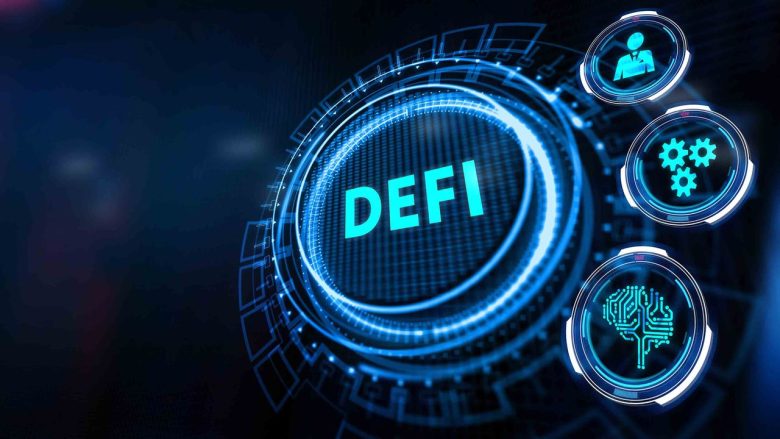DeFi, short for Decentralized Finance, is transforming how individuals make investments, borrow money, and trade their assets. Unlike traditional financial systems, which use intermediaries like banks, DeFi is based on blockchain technology, which is more transparent and easily accessible. By using smart contracts, middlemen can be done away with in DeFi systems, improving security and lowering costs simultaneously.
Investors now have access to lending platforms, decentralized exchanges, and yield farming that were previously offered only through central institutions. DeFi is reshaping financial markets and democratizing investment opportunities by expanding the available resources. This article aims to explain how DeFi functions, its pros and cons, and its possible future. Readers will gain insight into how DeFi is altering the investment world and what steps can be taken to capitalize on the emerging financial revolution.
What is DeFi, and How Does It Work?
DeFi, or decentralized finance, encompasses a wide variety of financial services and derivatives built on blockchain networks like Ethereum. In contrast to traditional finance that involves banks and other financial entities, DeFi allows two parties to transact directly through the use of smart contracts. These contracts, which perform certain actions on their own, will complete a transaction when certain conditions are satisfied, thus eliminating the need for third parties.
DeFi systems incorporate DEXs, or decentralized exchanges, lending platforms, stablecoins, and synthetic asset markets. Users can trade, earn interest, or provide liquidity without the need for a single controlling entity. With DeFi, financial transactions are secured and executed transparently and efficiently using blockchain technology.
The Benefits of DeFi for Investors:
The most remarkable benefit of DeFi is its accessibility when compared to other platforms. Unlike traditional investment platforms, which mandate approvals and background checks, DeFi enables anyone with an internet connection and digital wallet to participate. This inclusivity facilitates easier access for investors all over the world, regardless of their geographical location or financial background.
Furthermore, DeFi increases earn yield opportunities through liquidity mining, staking, and lending protocols. In comparison to conventional banking systems, DeFi platforms have more competitive interest rates, thus offering more options to grow their wealth. Moreover, due to the open nature of blockchain, all transactions are recorded systematically, which helps in minimizing the chances of fraud and manipulation.
Risks and Challenges Relating to DeFi Investments:
Investment in DeFi comes with numerous risks. One of the greatest risks is the crypto market’s volatility. Most DeFi projects are built on blockchain networks like Ethereum, which means their asset prices can change wildly. There are additional dangers around smart contracts, as hackers can, for example, breach security and siphon funds due to certain flaws in the code. Other types of risk include a lack of regulation, which implies that an investor has no protection, as is the case in the traditional finance system. Compounding these risks further, DeFi projects can also face liquidity challenges, which means it may be impossible to access funds during severe market downtrends. It is critical to understand these risks before investing in any DeFi endeavors.
Prominent DeFi Applications Alongside Investment Prospects:
Growing innovations that capture the interest of the public were provided by DeFi applications. Examples are Uniswap and SushiSwap, which are decentralized exchanges (DEXs) where users trade assets among themselves instead of through a centralized organization. Users can earn interest by supplying crypto assets or borrowing against their holdings on lending platforms such as Aave and Compound. With the growing number of users in the cryptocurrency market, users can earn additional passive income through yield farming and liquidity mining by contributing to liquidity pools. DAI stablecoins help users hedge against volatility by maintaining a fixed value. All of these applications open up new ways for investors to diversify their portfolios and optimize their returns.
Getting Started with DeFi Investing:
Before venturing into DeFi, it is important to have a foundational understanding of blockchain technology and cryptocurrency wallets. Creating a virtual wallet like MetaMask or Trust Wallet, which interacts with DeFi ecosystems, is the highest priority. After funding the wallet with Ethereum or other cryptocurrencies, users can access decentralized exchanges or lending platforms and start investing. Understanding various blockchain projects is a necessity for making informed decisions. Deploying security steps like two-factor authentication (2FA) and hardware wallets can prevent online threats. To succeed in the evolving DeFi world, it is critical to keep track of industry news, trends, and regulatory developments.
The DeFi Outlook Alongside Its Effect on Future Investments:
Equally, the future of investing and for DeFi looks steady with ever-increasing advances in blockchain technologies, multi-chain interoperability, and investors adopting more mainstream approaches. The potential proliferation of new models is likely to occur with more financial institutions looking into DeFi incorporation, such as the hybrid models blending decentralized and traditional finance. Regulatory frameworks will change for the better and will explicitly delineate parameters for DeFi projects, leading to heightened investor trust.
For now, innovations like layer-2 scaling solutions that seek to augment the efficiency of a given blockchain while also lessening DeFi transaction expenses alongside incomprehensible piling challenges would serve to shift DeFi into accessibility for a larger audience. But, despite impending challenges like an ack of adequate security measures and regulatory gray areas, the promise of DeFi revolutionizing conventional finance is something that can be claimed with certainty. Adopting this shift from trust-based banking systems to the inevitable intelligent systems (A)’ will provide seemingly boundless opportunities for discerning investors.
Conclusion:
DeFi, or decentralized finance, is one of the newest investment opportunities enabled by modern technology, and it offers investors new, easily accessible, and cost-effective methods of lending, borrowing, and trading without intermediaries. As with any new technology, several risks, such as market fluctuations, weak contract risks, and some undefined laws, exist. All these concerns can, however, be handled by careful monitoring and by implementing sufficient security policies. The growth of blockchain technology is expected to positively affect the adoption of DeFi and change the financial landscape for the better. People who embrace DeFi will put themselves in a position to take advantage of the rapidly evolving financial market.
FAQs:
1. What is DeFi, and how does it differentiate from traditional finance?
Decentralized Finance, commonly referred to as DeFi, combines finance with blockchain technology. Unlike the traditional finance system that requires banks as intermediaries to offer services such as lending, DeFi harnesses peer-to-peer technology to make transactions smoother and more efficient.
2. Is DeFi investing a safe option?
With decentralized finance (DeFi), the returns are promising; however, the potential volatility of the market, weak links in smart contracts, and scant regulations pose a significant risk. Proper planning and suitable security policies can help mitigate such risks.
3. How do I begin investing in DeFi?
To invest in DeFi, first purchase Ethereum and transfer it to a cryptocurrency wallet, such as MetaMask. Then, it will proceed to connect with DeFi platforms, which include decentralized exchanges, lending protocols, and yield farming projects.
4. Which DeFi platforms are the easiest to understand for newcomers?
Some of the more popular DeFi platforms with an easier setup are Uniswap for decentralized trading, Aave, and Compound, where users can earn interest on crypto assets.
5. Where do you see DeFi in the future?
With the development of blockchain technology, the growing acceptance of DeFi by businesses, and the emergence of safeguards to help investors trust systems due to changing laws, DeFi is set to evolve tremendously.




